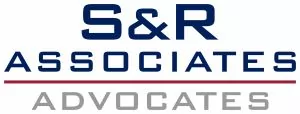The decision of the Bombay High Court (the "High Court") in Shiv Charan and Ors. v. Adjudicating Authority and Ors.1 ("Shiv Charan") has clarified the protection afforded to resolution applicants and empowers the National Company Law Tribunal (the "NCLT") in giving complete effect to a resolution plan submitted to it.
In Shiv Charan, the High Court inter alia held that:
- Once a resolution plan is approved that qualifies for immunity under Section 32A of the Insolvency and Bankruptcy Code, 2016 (the "IBC"), the NCLT has the power to direct the Enforcement Directorate (the "ED") to release attachment over the assets of a corporate debtor.
- The statutory prescription under Section 32A of the IBC means that no prosecution can continue against the corporate debtor and properties attached by the ED become free of attachment upon the approval of a resolution plan.
- The ED and the adjudicating authority under Section 8 of the Prevention of Money Laundering Act, 2002 (the "PMLA") are under a constitutional duty to implement the aforesaid statutory prescription under Section 32A of the IBC. The attachments by the ED should be released after the approval of a resolution plan automatically, by operation of law.
After setting out the factual background in brief, certain key observations of the High Court in Shiv Charan have been summarized in this note.
Brief Factual Background
In 2017, based on various first information reports ("FIRs") alleging, among other things, offences of cheating and criminal breach of trust, being 'scheduled offences' under the PMLA, an enforcement case information report ("ECIR") was filed by the ED estimating 'proceeds of crime' of about INR 85 billion against DSK Southern Projects Private Limited (the "DSKPPL"), the corporate debtor. The ECIR led to a provisional attachment of DSKPPL's assets under Section 5 of the PMLA which was later confirmed under Section 8 of the PMLA.2
In December 2021, corporate insolvency resolution process ("CIRP") was initiated against DSKPPL in, and eventually, in February 2023, a resolution plan was approved by the NCLT. However, the ED's attachment over the assets of DSKPPL continued during the CIRP and even after approval of the resolution plan. On an application filed by the successful resolution applicant under Section 60(5) and 32A of the IBC, the NCLT by its order directed the ED to release attachment over the assets of DSKPPL.
Cross writ petitions came to be filed before the High Court by the successful resolution applicant and the ED, respectively, against the order of the NCLT directing the ED to release attachment. The successful resolution applicant was aggrieved by the ED's refusal to release attachment over the assets of DSKPPL despite an order from the NCLT3 while the ED contended, inter alia, that the NCLT's order renders the provisions of the PMLA nugatory.
It is important to note that ED did not challenge the order by the NCLT approving the resolution plan.4
Issue before the High Court
The High Court identified the core issues that arose for its consideration. First, can an attachment by the ED over the assets of a corporate debtor continue after approval of resolution plan (the "Issue of Release of ED's Attachment"), and second, does the NCLT have the jurisdiction under Section 60(5) of the IBC to direct the ED to release its attachment over the assets of a corporate debtor invoking Section 32A of the IBC5 (the "Issue of NCLT's Jurisdiction").
The Issue of Release of ED's Attachment
- Section 32A of the IBC which provides for immunity to a corporate debtor applies only after a resolution plan is approved. Section 32A grants immunity to a corporate debtor from liabilities which may be imposed on a corporate debtor for offences committed prior to commencement of CIRP.
- Such immunity will not be available if the promoters or those in management or control of the corporate debtor or any related party of such persons continue in management or control of the corporate debtor under the approved resolution plan.6 To qualify for immunity, there must be a "clean break" with a change in the ownership and control of the corporate debtor.
- Save and except the corporate debtor, all other accused shall continue to face prosecution and remain liable for the alleged offences.7 While enjoying immunity, the corporate debtor is required to cooperate with the investigation.8
- Section 32A of the IBC is a non-obstante provision. Accordingly, Section 32A of the IBC should prevail over the provisions of the PMLA, a prior legislation. Relying on a decision of the Hon'ble Supreme Court of India in Manish Kumar,9 the High Court noted that the immunity from prosecution granted under Section 32A of the IBC reflects Parliament's legislative intent. Referring to the affidavit filed by the Government of India in Manish Kumar, the High Court re-emphasized the 'clean slate principle' under IBC.10
- The High Court emphasized that upon approval of a resolution plan, the release of attachment over the assets of a corporate debtor should be automatic by operation of law.11 There is no scope to continue the ED's attachment over the assets of corporate debtor after approval of a resolution plan.12 There is no discretion with the ED to decide whether or not the immunity under Section 32A of the IBC can be granted.13
The attachment of assets under the PMLA is a measure in aid of final confiscation under Section 8(5) of the PMLA only to be enforced if a corporate debtor is convicted for an offence of money laundering. Since Section 32A of
- the IBC grants immunity to the corporate debtor against prosecution, there cannot be any conviction of the corporate debtor.14 Accordingly, the continuation of the attachment by the ED over the assets of a corporate debtor would make no sense in a situation where the corporate debtor cannot be convicted.
The Issue of NCLT's Jurisdiction
- Similar to Section 32A of the IBC, Section 60(5) of the IBC is also a non-obstante provision. Accordingly, Section 60(5) should prevail over the provisions of the PMLA, a prior legislation. Under Section 60(5) of the IBC, the NCLT has the jurisdiction to decide any question of fact or law arising in relation to insolvency resolution proceedings. Such questions of facts and law would obviously include issues arising under Section 32A of the IBC15 and by giving effect to Section 32A of the IBC, the NCLT does not render the provisions of PMLA nugatory.
- Under Section 31(1) of the IBC, the NCLT must be satisfied that the provisions of the resolution plan can be effectively implemented. In other words, the NCLT must make sure that the resolution plan approved by it is effectively implemented.16
- The NCLT has the power to direct the ED to release properties from attachment in order to implement the law prescribed under Section 32A of the IBC.17
Conclusion
The decision of the High Court in Shiv Charan lays down the law on the status of ED's attachment over the assets of a corporate debtor with an approved resolution plan under the IBC in clear and precise terms. Although the High Court in its analysis does not refer to it, the decision is also supported by the terms of Section 31(1)18 of the IBC which prescribes that an order of the NCLT approving a resolution plan is binding on all stakeholders including the Central Government, any State Government and local authorities.
It is also interesting to note that while the High Court has observed that upon approval of a resolution plan qualifying for immunity under Section 32A of the IBC, the ED's attachment over the assets of a corporate debtor ceases to exist byoperation of law, the High Court granted six (6) weeks' time for the 'ministerial act'19 of release of attachment by the ED to be communicated to the corporate debtor. The High Court restrained itself from stating that resolution applicants are entitled to deal with the assets of the corporate debtor as if no attachment exists. In effect, this implies that despite the judgment in Shiv Charan, a resolution applicant will require a positive order from the ED confirming release of attachment over the assets of the corporate debtor.
Footnotes
1. Shiv Charan and Ors. v. Adjudicating Authority and Ors., 2024 SCC Online Bom 701. As at the date of writing this note, the judgment in Shiv Charan has not been challenged by the ED.
2. Shiv Charan, paragraph 4.
3. Shiv Charan, paragraph 5.
4. Shiv Charan, paragraph 6.
5. Shiv Charan, paragraph 11.
6. Shiv Charan, paragraph 16.
7. Shiv Charan, paragraph 17.
8. Shiv Charan, paragraph 45.
9. Manish Kumar v. Union of India., (2021) 5 SCC 1 ("Manish Kumar").
10. Shiv Charan, paragraph 34.
11. Shiv Charan, paragraph 37.
12. Shiv Charan, paragraph 38.
13. Shiv Charan, paragraph 39.
14. Shiv Charan, paragraph 53(iv).
15. Shiv Charan, paragraph 28.
16. Shiv Charan, paragraph 24.
17. Shiv Charan, paragraph 29.
18. While Section 31(1) of the IBC is quoted at paragraph 24 in Shiv Charan, the Section has not been referred in the context stated by the authors..
19. Shiv Charan, paragraph 54.
This insight/article is intended only as a general discussion of issues and is not intended for any solicitation of work. It should not be regarded as legal advice and no legal or business decision should be based on its content.


